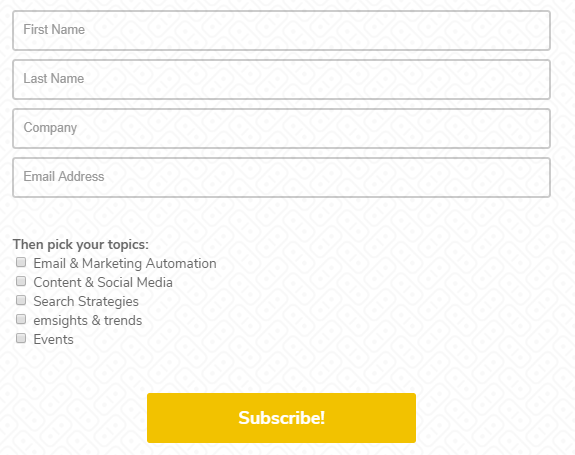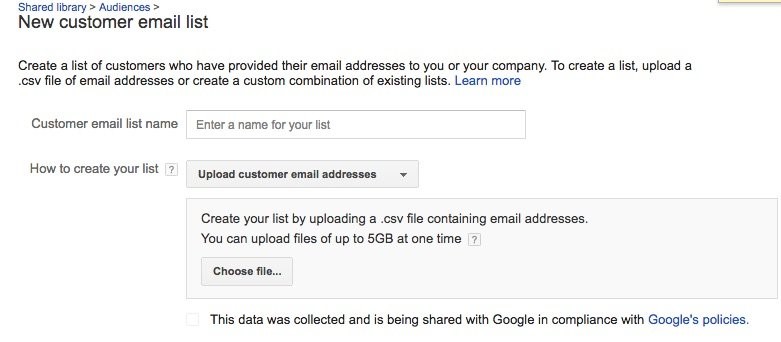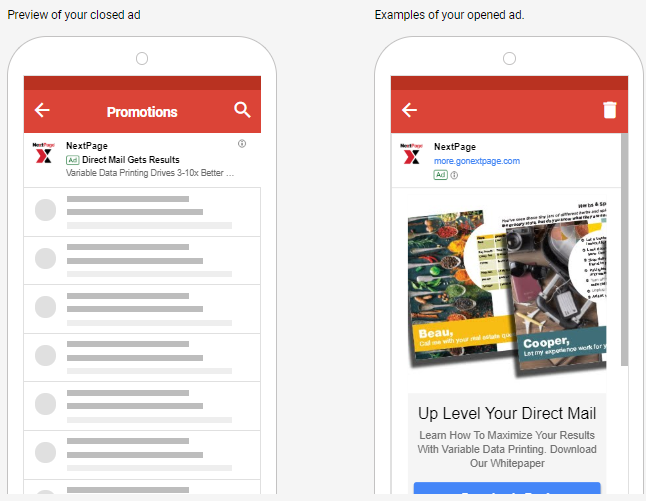Email marketing and search engine marketing are the top channels for driving highly qualified traffic to your website, and they are excellent ways for prospects to easily engage with and consume your content. Both SEO and email marketing are highly dependent upon a content strategy that focuses on relevance and quality. If you are not offering highly relevant and high-quality content, email subscribers will lose interest and search engines will stop giving you the credit you deserve.
There are a lot of synergies between your email marketing strategy and your search engine marketing strategy, beyond just the content. Let’s talk about a few ways we can use email marketing strategy to support SEO, and vice versa.
1. Develop a Content Strategy to Support Target Audiences Across All Channels
Content is king, regardless of which channel you are working on. From a SEO perspective, we are constantly looking for great, highly relevant content that we can use to dominate organic search rankings. From a paid search perspective, we are looking for promotional content that typically has a very specific call to action – we want to drive leads or we want to drive sales as quick as possible. For social, we are looking for content to engage our community. With email, we need to have content that can continue to build engagement and help drive our target audience through the funnel.
 At emfluence, we create targeted segments and use a subscriber list to let subscribers self-identify the content they are interested in receiving. Using these basic segments helps us to ensure we are creating content that is useful and relevant to the types of content people have shown an interest in. We can further take these segmented lists to support further campaign optimizations! (See for yourself by signing up here, if you haven’t already).
At emfluence, we create targeted segments and use a subscriber list to let subscribers self-identify the content they are interested in receiving. Using these basic segments helps us to ensure we are creating content that is useful and relevant to the types of content people have shown an interest in. We can further take these segmented lists to support further campaign optimizations! (See for yourself by signing up here, if you haven’t already).
2. Use Email Lists to Support Search Segmentation
 Did you know that you can use email lists to create custom lists in Google Ads, Facebook, Bing, and other channels? There are certain requirements you have to meet within each of these advertising channels, but the concept of leveraging email lists to create custom lists is a very applicable solution for many advertisers. Let’s think about a few examples where using email lists could be a smart way to be smarter and more efficient with your media dollars:
Did you know that you can use email lists to create custom lists in Google Ads, Facebook, Bing, and other channels? There are certain requirements you have to meet within each of these advertising channels, but the concept of leveraging email lists to create custom lists is a very applicable solution for many advertisers. Let’s think about a few examples where using email lists could be a smart way to be smarter and more efficient with your media dollars:
Create a Customer Exclusion List
If you have specific campaigns that you want to run that are specifically designed to attract new customers, you can try uploading a list of your current customers and excluding them from seeing your ads across all the channels you are planning to use. While there will not likely be a 100% match, this can help to ensure you are getting your ads in front of new potential customers rather than existing customers.
Re-Engage “Stagnant” Customers
On the opposite side, perhaps you want to run a campaign that is designed to re-engage previous customers that have not purchased or engaged with you in the past six months. You can export a list of customer emails that match the requirements (haven’t purchased/engaged in the past six months) and upload that into the appropriate channels. Create specific ads designed to entice these stagnant customers to become customers again.
3. Coordinate A/B Tests Across Search Ads and Email Subject Lines, and Vice Versa
One of the best things about running paid search ads is the ease of running simple A/B tests on ad copy to determine the most engaging types of headlines. These ads can be rotated quickly and in an automated way in order to maximize testing efficacy. The findings from these results could be easily utilized to inform email subject line tests that have worked in paid search.
Similarly, if you have run email subject line tests that have had strong results you should use those findings to inform future paid search ad variations and testing.
4. Create Search Campaigns to Support Email List Growth
 If one of your goals is to increase overall email list growth, developing campaigns specifically to support this effort is a low hanging opportunity. With a goal to build your email list, the end goal is to feed the top of the funnel in order to run efficient and effective nurture campaigns to continuously move people to the middle and bottom of the funnel. We want to create a steady flow. SEO and paid search are top performers for supporting this strategy.
If one of your goals is to increase overall email list growth, developing campaigns specifically to support this effort is a low hanging opportunity. With a goal to build your email list, the end goal is to feed the top of the funnel in order to run efficient and effective nurture campaigns to continuously move people to the middle and bottom of the funnel. We want to create a steady flow. SEO and paid search are top performers for supporting this strategy.
5. Launch Gmail Sponsored Promotions Campaigns
 Gmail Sponsored Promotions, more commonly known as Gmail ads, are the latest ad variation that we have seen having a great impact on campaign performance. This is a direct merger of search and email! To over-simplify the process, advertisers are able to run ads through Google Ads. These ads will be displayed as a collapsed ad in the Promotions tab within Gmail. When users click on these ads, it will open an extended ad that looks like a promotional email.
Gmail Sponsored Promotions, more commonly known as Gmail ads, are the latest ad variation that we have seen having a great impact on campaign performance. This is a direct merger of search and email! To over-simplify the process, advertisers are able to run ads through Google Ads. These ads will be displayed as a collapsed ad in the Promotions tab within Gmail. When users click on these ads, it will open an extended ad that looks like a promotional email.
6. Leverage Keyword Research When Creating Email Content
Keywords, while an essential part of how we build and target SEO and PPC strategies, are something that could and should be considered across all areas of content development. Keywords that are of high value for us ad advertisers in the search space are also high value when connecting across social media and email. Using the same general guidelines of creating content that is great for consumers means we think about how they are searching for information.
Just to make a point, I want to make it clear that I’m not saying we need to start stuffing keywords into email copy now. However, thinking of each channel in a vacuum is not an effective way to think about marketing across the funnel and across channels. Consumers may use each channel differently, however our fundamental thought processes do not change.



